Introduction
Advanced Driver Assistance Systems, commonly known as ADAS, represent a groundbreaking advancement in the automotive industry. These systems integrate cutting-edge technology to enhance vehicle safety, improve driver convenience, and pave the way for autonomous driving. In this article, we’ll delve into the world of ADAS, exploring how these innovative systems work, their various components, and the profound impact they are having on the way we drive.
ADAS systems rely on a network of sensors, cameras, radar, and lidar to monitor the vehicle’s surroundings. These sensors collect data on road conditions, nearby vehicles, pedestrians, and other potential hazards. Advanced algorithms process this data in real-time, enabling the vehicle to make split-second decisions.
One key component of ADAS is adaptive cruise control (ACC), which automatically adjusts the vehicle’s speed to maintain a safe following distance from the vehicle ahead. ACC can reduce the stress of highway driving and improve overall safety.
Another vital feature is lane-keeping assistance, which uses cameras to detect lane markings and gently steers the vehicle to keep it within the lane. If the driver begins to drift out of the lane without signaling, the system can provide corrective steering input or issue warnings.
Collision avoidance systems are designed to prevent or mitigate accidents. They can include features like automatic emergency braking (AEB), which can apply the brakes if a collision is imminent and the driver doesn’t respond in time. Some systems can even detect pedestrians and cyclists, providing additional layers of safety.
Parking assistance systems use sensors and cameras to assist with parking maneuvers. They can provide visual and auditory cues to help the driver park in tight spaces or avoid obstacles while maneuvering.
Blind-spot monitoring systems use sensors to detect vehicles in the driver’s blind spots and issue warnings if the driver attempts to change lanes when another vehicle is present.
Traffic sign recognition systems use cameras to identify road signs, such as speed limits and stop signs, and display this information to the driver on the dashboard or head-up display.
Overall, ADAS systems are making driving safer, reducing accidents, and providing convenience to drivers. They represent a significant step toward fully autonomous vehicles in the future.
Looking for more insights? You’ll find them right here in our extended coverage: What is ADAS (Advanced Driver Assistance Systems)? – Overview …
ADAS consists of a network of sensors, cameras, radar, lidar, and onboard computers that work together to provide a multitude of functions. Here are some of the key components:
Advanced Driver Assistance Systems (ADAS) rely on a sophisticated network of components to enhance vehicle safety and driver assistance. These components work harmoniously to create a comprehensive suite of features aimed at preventing accidents and providing a smoother driving experience. Let’s explore some of the crucial components that constitute the backbone of ADAS technology:
Cameras: High-resolution cameras are strategically positioned around the vehicle, capturing real-time images of the surroundings. These cameras enable functions such as lane-keeping assistance, traffic sign recognition, and pedestrian detection. They play a pivotal role in ensuring the vehicle’s awareness of its environment.
Sensors: ADAS systems are equipped with various sensors, including ultrasonic sensors and infrared sensors. These sensors detect obstacles, measure distances, and contribute to features like adaptive cruise control, blind-spot monitoring, and parking assistance. They provide the vehicle with a 360-degree awareness of its immediate vicinity.
Radar: Radar sensors use radio waves to detect objects and their speed. They are essential for adaptive cruise control, which maintains a safe following distance from the vehicle ahead, adjusting the vehicle’s speed as necessary to prevent collisions. Radar also assists in collision avoidance and emergency braking.
Lidar: Lidar (Light Detection and Ranging) sensors use laser beams to create a detailed 3D map of the surroundings. While currently more common in autonomous vehicles, lidar is increasingly being integrated into ADAS for advanced object detection, precise mapping, and enhanced perception, especially in complex urban environments.
Computing Units: The onboard computers, often referred to as Electronic Control Units (ECUs), process data from the various sensors and cameras in real time. These computers analyze the information and execute commands to control the vehicle’s steering, braking, and acceleration. They form the brain of the ADAS system.
Actuators: Actuators are responsible for translating the computer’s commands into physical actions. For instance, when adaptive cruise control determines that the vehicle needs to slow down, actuators control the braking system to achieve the desired speed adjustment. These components bridge the gap between digital decision-making and mechanical execution.
Haptic Feedback: Some ADAS features use haptic feedback, such as steering wheel vibrations or seat vibrations, to alert the driver to potential dangers or provide guidance. For example, lane departure warning systems may gently vibrate the steering wheel to indicate drifting out of the lane.
Display Interfaces: Many ADAS functions are conveyed to the driver through visual and auditory interfaces. Heads-up displays, dashboard screens, and audible alerts keep the driver informed about the system’s status and any required actions.
Connectivity: ADAS systems often rely on connectivity to access real-time data, including traffic information, road conditions, and software updates. This connectivity can be achieved through cellular networks, GPS, and vehicle-to-vehicle (V2V) or vehicle-to-infrastructure (V2I) communication.
Machine Learning Algorithms: ADAS systems continually improve their performance through machine learning algorithms. These algorithms analyze data from past driving experiences to enhance functionality, adapt to driver behavior, and optimize response strategies.
In essence, Advanced Driver Assistance Systems are a testament to the marriage of cutting-edge technology and automotive engineering. The synergy of these components empowers vehicles to navigate the road with an unprecedented level of safety, efficiency, and driver assistance. As ADAS technology advances, it will likely play an increasingly prominent role in shaping the future of transportation.
To expand your knowledge on this subject, make sure to read on at this location: Experience Safe and Smart Driving with Vision-based ADAS
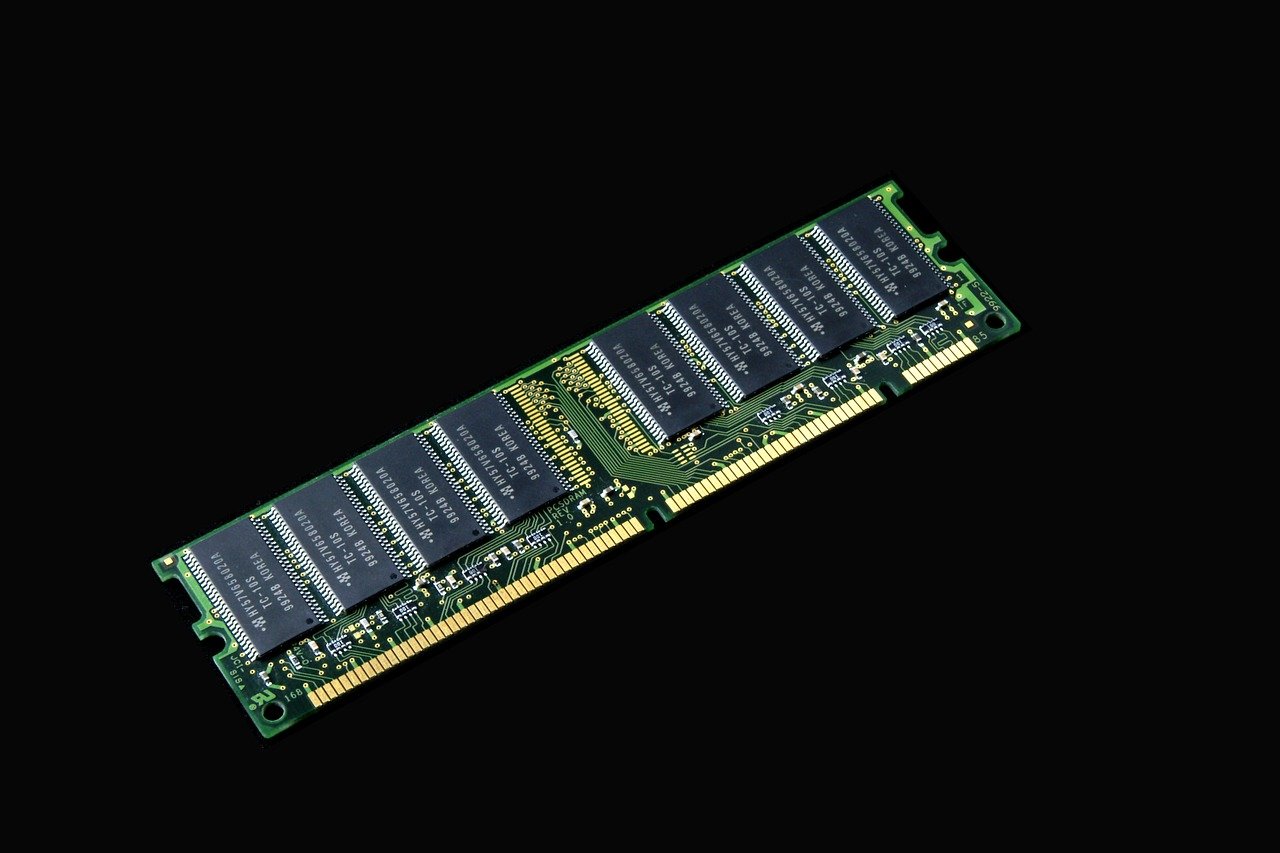
ADAS relies on various sensors to gather data about the vehicle’s surroundings. These sensors include ultrasonic sensors, which detect objects nearby; radar sensors, which measure the speed and distance of objects; and lidar sensors, which use lasers to create detailed 3D maps of the environment.
Advanced Driver Assistance Systems (ADAS) represent a remarkable fusion of technology and automotive engineering. To dive deeper into how these systems work, it’s essential to understand the intricate web of sensors that enable them to function seamlessly. Here’s a more comprehensive look at the sensor technologies that underpin ADAS:
1. Ultrasonic Sensors: At the forefront of ADAS, ultrasonic sensors are the “eyes” that scan the immediate vicinity of the vehicle. Emitting high-frequency sound waves, they bounce off nearby objects and return as echoes. By measuring the time it takes for echoes to return, ultrasonic sensors can calculate the distance to objects in real-time. This allows for precise parking assistance, obstacle detection, and blind-spot monitoring.
2. Radar Sensors: Radar-based sensors operate on the principle of emitting radio waves and measuring their reflection. They excel in gauging the speed and distance of objects, making them invaluable for adaptive cruise control and collision avoidance systems. Radar sensors can distinguish between stationary and moving objects and are effective in various weather conditions, including rain and fog.
3. Lidar Sensors: Lidar, short for Light Detection and Ranging, takes ADAS to a new level by creating intricate 3D maps of the vehicle’s surroundings. It achieves this by emitting laser pulses and measuring the time it takes for them to bounce off objects and return. Lidar sensors are exceptionally precise, capturing detailed information about the environment, including the size and shape of objects. This technology is central to autonomous driving, as it provides the depth perception necessary for a vehicle to navigate complex scenarios.
4. Cameras: Cameras are the “eyes” of ADAS, providing visual data that helps interpret the surrounding environment. These cameras can be mounted at various points on the vehicle, including the front, rear, and sides. They play a vital role in traffic sign recognition, lane departure warning, and pedestrian detection. With advancements in image processing and artificial intelligence, cameras are becoming increasingly adept at identifying and categorizing objects.
5. Infrared Sensors: Infrared sensors detect heat signatures emitted by objects. They are particularly useful for night vision systems, allowing drivers to see clearly in low-light conditions. Infrared sensors can identify pedestrians, animals, or even objects on the road that may not be visible with conventional headlights.
6. GPS and IMU: While not traditional sensors in the same sense as the others, GPS (Global Positioning System) and IMU (Inertial Measurement Unit) are essential components of ADAS. GPS provides precise location data, while IMU tracks the vehicle’s orientation and movement. Together, they enable features like adaptive routing, lane-keeping assistance, and predictive analytics.
7. Sensor Fusion: The real magic of ADAS occurs when data from these various sensors is fused and processed in real-time. Sensor fusion algorithms combine information from ultrasonic, radar, lidar, cameras, and other sensors to build a comprehensive understanding of the vehicle’s surroundings. This multi-sensor approach enhances the reliability and accuracy of ADAS features, making them more responsive and adaptable to changing driving conditions.
In summary, the complex interplay of ultrasonic, radar, lidar, cameras, infrared sensors, GPS, IMU, and sophisticated sensor fusion algorithms forms the backbone of Advanced Driver Assistance Systems (ADAS). These sensors work tirelessly to enhance driver safety, improve convenience, and lay the foundation for the future of autonomous driving. As technology continues to evolve, ADAS will become even more sophisticated, helping to usher in a new era of smarter, safer, and more efficient transportation.
Don’t stop here; you can continue your exploration by following this link for more details: Automated Vehicle Safety | NHTSA
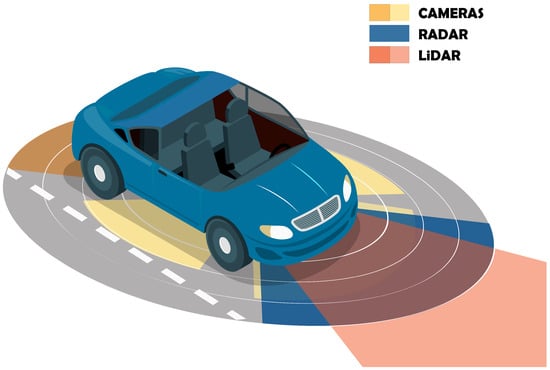
High-resolution cameras capture images and video of the road ahead and the vehicle’s surroundings. These images are processed by the system’s computer to identify objects, lane markings, traffic signs, and pedestrians.
This advanced visual recognition system provides real-time information to the vehicle’s AI, enhancing safety by enabling features like adaptive cruise control and automated emergency braking. The continuous improvement of camera technology promises even more precise object detection and lane-keeping capabilities in the future.
To expand your knowledge on this subject, make sure to read on at this location: Autonomous Driving | Snapdragon Ride ADAS Tech for Smart Cars …
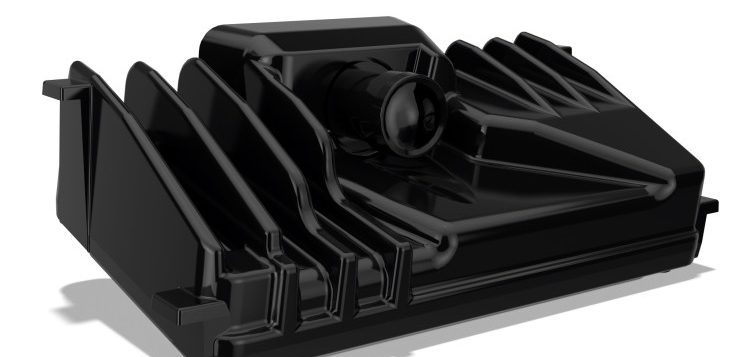
ADAS systems feature powerful onboard computers equipped with advanced algorithms. These computers process data from the sensors and cameras, interpret it, and make real-time decisions to assist the driver.
ADAS systems rely on sophisticated onboard computers equipped with powerful processors and advanced algorithms. These computational brains are the heart of the system, responsible for processing the wealth of data collected from various sensors and cameras throughout the vehicle.
One crucial aspect of these computers is their ability to handle large volumes of data in real-time. They receive input from radar sensors, lidar units, ultrasonic sensors, cameras, and more, all working together to create a comprehensive view of the vehicle’s surroundings. This data includes information about nearby vehicles, pedestrians, road conditions, lane markings, and potential hazards.
The advanced algorithms within these computers are designed to interpret this data and make split-second decisions. For example, if a pedestrian suddenly steps into the path of the vehicle, the computer can recognize the danger and initiate emergency braking to prevent a collision. Similarly, when using adaptive cruise control, the computer constantly adjusts the vehicle’s speed based on the distance to the vehicle ahead, maintaining a safe following distance.
Furthermore, these computers play a crucial role in the development of autonomous driving technology. They are responsible for processing complex sensor data to navigate the vehicle, make decisions, and ensure safe autonomous operation. As autonomous driving technology advances, the capabilities of these onboard computers continue to evolve, bringing us closer to a future where vehicles can navigate and operate independently.
In essence, the onboard computers in ADAS systems represent the technological backbone that enables these systems to enhance safety, improve convenience, and pave the way for the future of autonomous driving. Their computational power and sophisticated algorithms are at the core of the transformation happening in the automotive industry.
For additional details, consider exploring the related content available here What is ADAS (Advanced Driver Assistance Systems)? – Overview …
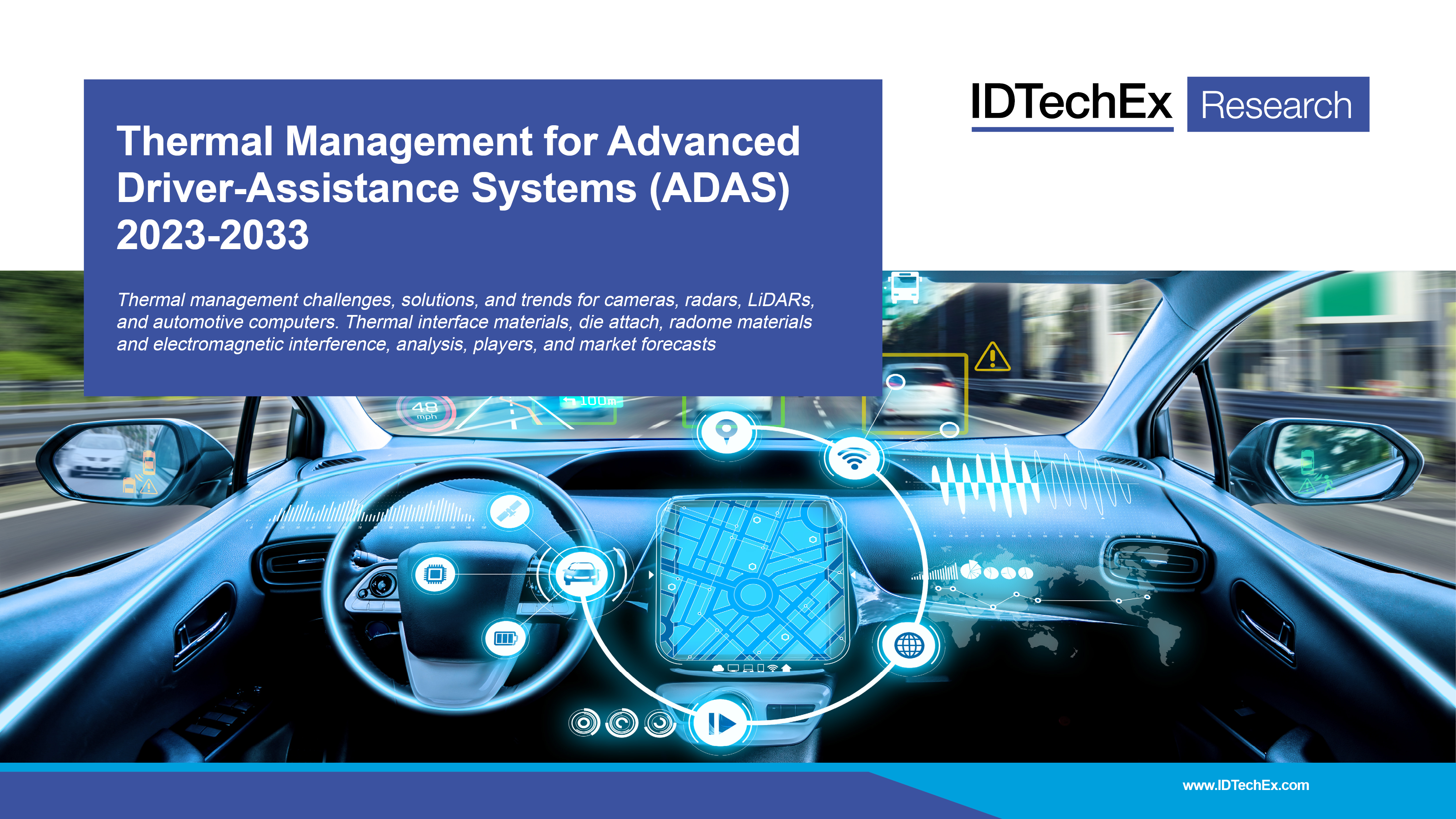
ADAS offers a wide range of functions designed to enhance safety, convenience, and overall driving experience. Some of the most common ADAS features include:
Advanced Driver Assistance Systems (ADAS) are revolutionizing the way we drive by introducing a plethora of innovative features that prioritize safety, convenience, and an overall improved driving experience. Let’s delve deeper into some of the most common ADAS features, each of which brings unique advantages to modern vehicles:
Adaptive Cruise Control (ACC): ACC uses radar or cameras to maintain a safe following distance from the vehicle ahead. It automatically adjusts your vehicle’s speed to match the flow of traffic, reducing the need for constant acceleration and braking.
Lane Keeping Assist (LKA): LKA helps you stay in your lane by gently steering the vehicle if you start to drift without using your turn signal. It enhances safety on highways and long drives.
Blind-Spot Monitoring (BSM): BSM uses sensors to detect vehicles in your blind spots and provides visual or auditory alerts when you attempt to change lanes, preventing potential collisions during lane changes.
Forward Collision Warning (FCW) and Automatic Emergency Braking (AEB): FCW alerts you to an impending collision with the vehicle in front, while AEB can apply the brakes automatically if you don’t react in time, reducing the severity of or preventing accidents.
Traffic Sign Recognition (TSR): TSR uses cameras to read road signs and displays speed limits, no-entry signs, and other important information on your dashboard or heads-up display.
Parking Assistance: ADAS offers a variety of parking aids, including parking sensors, 360-degree camera systems, and automatic parallel or perpendicular parking assistance, making parking in tight spaces a breeze.
Pedestrian Detection and Protection: This feature uses cameras and sensors to detect pedestrians in or near the road. If a collision is imminent, it can alert the driver and apply the brakes to prevent or mitigate the impact.
Cross-Traffic Alert (CTA): CTA monitors cross-traffic when you’re backing out of a parking space. It warns you of approaching vehicles, reducing the risk of collisions in busy parking lots.
Driver Drowsiness Monitoring: Using data from sensors and cameras, this feature analyzes your driving behavior for signs of drowsiness or distraction and alerts you to take a break.
Adaptive Headlights: These headlights automatically adjust their intensity and direction based on your speed, steering angle, and road conditions to improve visibility without blinding other drivers.
Highway Pilot: In some advanced systems, the highway pilot can take control of acceleration, braking, and steering on highways, allowing for a semi-autonomous driving experience.
Traffic Jam Assist: This feature helps manage stop-and-go traffic by maintaining a safe following distance, steering, and stopping the vehicle when needed.
Voice Commands: Many ADAS systems offer voice-activated controls, allowing you to adjust settings, make calls, or access navigation without taking your hands off the wheel.
Telematics: Telematics systems provide real-time data and connectivity, enabling services such as remote vehicle diagnostics, emergency assistance, and over-the-air software updates.
Night Vision: Some luxury vehicles feature night vision cameras that can detect pedestrians and animals in low-light conditions, enhancing nighttime driving safety.
These ADAS features collectively contribute to safer roads, reduced accidents, and a more enjoyable driving experience. As technology continues to evolve, we can expect even more advanced systems that further enhance vehicle safety and convenience, ultimately paving the way for the future of autonomous driving.
You can also read more about this here: What is ADAS (Advanced Driver Assistance Systems)? – Overview …
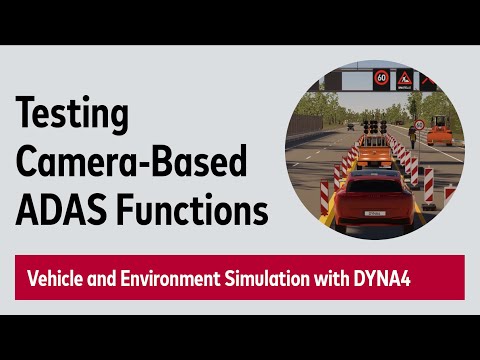
This system automatically adjusts the vehicle’s speed to maintain a safe following distance from the car in front, making highway driving more comfortable and reducing the risk of rear-end collisions.
The Adaptive Cruise Control (ACC) system represents a significant leap forward in automotive technology, redefining the way we approach highway driving. It’s not just about convenience; it’s about safety and peace of mind. Let’s delve deeper into how this system operates and the benefits it brings to the road:
**1. Dynamic Speed Control: At its core, ACC is an intelligent system that dynamically regulates your vehicle’s speed while cruising on the highway. Unlike traditional cruise control, which operates at a fixed speed set by the driver, ACC continuously adjusts your vehicle’s speed based on the traffic conditions ahead. It’s like having an attentive co-pilot who monitors the road and takes action when needed.
**2. Sensor Precision: ACC relies on a combination of radar and sometimes lidar sensors mounted on the front of the vehicle. These sensors emit signals that bounce off the vehicle in front, measuring the distance and relative speed between the two cars. This real-time data forms the basis for ACC’s decisions.
**3. Safe Following Distance: Safety is paramount with ACC. It automatically calculates and maintains a safe following distance from the vehicle in front of you. By doing so, it provides a buffer that allows for a quick reaction in case of sudden braking or unexpected maneuvers by the leading vehicle. This feature is a game-changer in reducing the risk of rear-end collisions, a common type of highway accident.
**4. Smooth Traffic Flow: ACC doesn’t just enhance safety; it also improves the flow of traffic. By maintaining a consistent and safe following distance, ACC helps reduce the “accordion effect” on highways, where traffic slows down and then speeds up again, causing congestion. This contributes to a smoother and more efficient driving experience for everyone on the road.
**5. Adapting to Traffic Conditions: ACC is not a one-size-fits-all system. Drivers can typically adjust the following distance and speed settings to suit their comfort level and the prevailing traffic conditions. Whether you’re in stop-and-go traffic or cruising on an open highway, ACC adapts accordingly.
**6. Convenience and Comfort: Beyond safety, ACC adds a layer of convenience and comfort to long highway journeys. It alleviates the need for constant speed adjustments and allows the driver to focus more on the road ahead and less on the accelerator and brake pedals. It’s particularly valuable on monotonous highway stretches, reducing driver fatigue.
**7. Bringing Us Closer to Autonomy: ACC is a stepping stone toward autonomous driving. It’s part of the evolving ecosystem of Advanced Driver Assistance Systems (ADAS) that lay the foundation for self-driving cars. ACC demonstrates the power of technology to enhance driving safety and efficiency while giving us a glimpse of the future where vehicles seamlessly cooperate on the road.
In conclusion, Adaptive Cruise Control (ACC) is more than just a convenient feature; it’s a safety net that revolutionizes highway driving. By automatically adjusting your vehicle’s speed to maintain a safe following distance, ACC reduces the risk of accidents, improves traffic flow, and enhances the overall driving experience. As technology continues to evolve, we can expect even more advanced and sophisticated iterations of ACC, bringing us closer to a future of autonomous transportation.
For a comprehensive look at this subject, we invite you to read more on this dedicated page: The 6 Levels of Vehicle Autonomy Explained | Synopsys Automotive

LKA systems use cameras and sensors to monitor lane markings. If the vehicle begins to drift out of its lane without the turn signal activated, the system gently steers the car back into its lane.
LKA, or Lane Keeping Assist, is a crucial component of modern driver-assistance systems. By promoting safer driving habits and reducing the risk of unintentional lane departures, LKA contributes to overall road safety. As technology evolves, we can anticipate even more advanced lane-keeping features, further enhancing the driving experience and safety on our roads.
For a comprehensive look at this subject, we invite you to read more on this dedicated page: Impact of Advanced Driver Assistance Systems (ADAS) on Road …
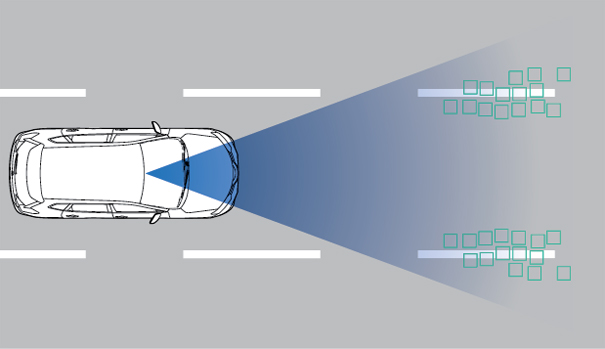
FCW systems use sensors to detect potential collisions with vehicles or pedestrians ahead. They alert the driver with visual or audible warnings and may even apply the brakes if necessary to avoid a collision.
Forward Collision Warning (FCW) systems are a vital component of Advanced Driver Assistance Systems (ADAS), providing an extra layer of safety by actively monitoring the road ahead. These systems employ a range of sensors, such as radar, lidar, or cameras, to constantly scan the environment for potential collision risks.
When a potential collision with a vehicle or pedestrian is detected, FCW systems react swiftly to alert the driver. The alerts can take various forms, including visual warnings on the dashboard, heads-up displays, or even auditory signals like beeps or chimes. This immediate feedback serves as a crucial reminder to the driver to take evasive action and avoid a possible accident.
What sets FCW apart from other safety features is its ability to go beyond warnings. In situations where a collision appears imminent, these systems can take proactive measures to prevent or mitigate the impact. One of the most noteworthy actions is automatic emergency braking (AEB). If the driver does not respond to the warnings and the risk of collision remains high, FCW can initiate emergency braking, either partially or fully, to reduce the severity of the impact or, ideally, prevent it altogether.
This combination of warning and intervention makes FCW systems a significant advancement in vehicle safety. They act as a vigilant co-pilot, constantly scanning the road ahead and assisting the driver in avoiding accidents caused by inattention or misjudgment.
Moreover, FCW systems are integral to the development of autonomous driving technology. They represent a critical building block in the progression toward fully autonomous vehicles, where vehicles will have the capability to make split-second decisions and take immediate action to protect passengers and pedestrians alike.
In summary, FCW systems epitomize the goal of ADAS technology: to enhance safety, reduce accidents, and ultimately save lives on the road. Their ability to detect and react to potential collisions in real-time is a testament to the incredible advancements in automotive safety technology.
Explore this link for a more extensive examination of the topic: AGING Older Adults’ Driving Behavior Using Longitudinal and …

AEB systems can autonomously apply the brakes when a collision is imminent, reducing the severity of or preventing accidents altogether.
Automatic Emergency Braking (AEB) systems represent a significant leap forward in automotive safety technology. These systems have the potential to save lives and reduce the severity of accidents by autonomously taking action when a collision is imminent.
Here’s how AEB works in more detail:
Sensors and Detection: AEB relies on a combination of sensors, including radar, lidar, cameras, and sometimes ultrasonic sensors. These sensors continuously monitor the road ahead and the vehicle’s surroundings. They can detect other vehicles, pedestrians, cyclists, and obstacles.
Risk Assessment: As the vehicle moves, the AEB system assesses the risk of a collision based on the relative speed and distance between the vehicle and the objects or obstacles in its path. It also considers the vehicle’s speed and the driver’s actions.
Alert and Warning: If the system determines that a collision is likely, it provides an alert to the driver. This alert can be visual, such as a warning light on the dashboard or a heads-up display, and it can be auditory, through warning chimes or spoken alerts. The goal is to give the driver a chance to react and take evasive action.
Autonomous Braking: If the driver doesn’t respond or doesn’t apply sufficient braking force to avoid the collision, the AEB system takes control and applies the brakes autonomously. It can apply the brakes with the force required to prevent the collision or reduce its severity. Some AEB systems can bring the vehicle to a complete stop if necessary.
Post-Collision Features: After a collision is avoided or mitigated, some AEB systems can help prepare the vehicle and its occupants for impact. This can include tensioning seatbelts, adjusting seating positions, and closing windows to maximize safety during a crash.
The advantages of AEB are manifold:
Collision Prevention: The primary benefit of AEB is its ability to prevent collisions, especially in situations where the driver might not react quickly enough. It can significantly reduce the number of rear-end collisions, which are common and often result in injuries.
Reduced Severity: In cases where a collision is unavoidable, AEB can reduce the severity of the impact. By applying the brakes early and with optimal force, it can minimize the damage and injuries resulting from the crash.
Safety for Vulnerable Road Users: AEB systems are not limited to detecting vehicles. They can also identify pedestrians and cyclists, making roads safer for everyone, including those outside of cars.
Driver Assistance: AEB is a prime example of how driver assistance systems can enhance safety. It serves as a safety net, particularly in situations where driver distraction or fatigue might be factors.
Insurance Benefits: Some insurance providers offer discounts to drivers with vehicles equipped with AEB and other advanced safety features. This can result in lower insurance premiums.
As AEB technology continues to improve and becomes more widespread, it has the potential to make our roads significantly safer. It’s a prime example of how advanced driver assistance systems are not just gadgets but crucial tools for reducing accidents and saving lives.
Should you desire more in-depth information, it’s available for your perusal on this page: The future of autonomous vehicles (AV) | McKinsey
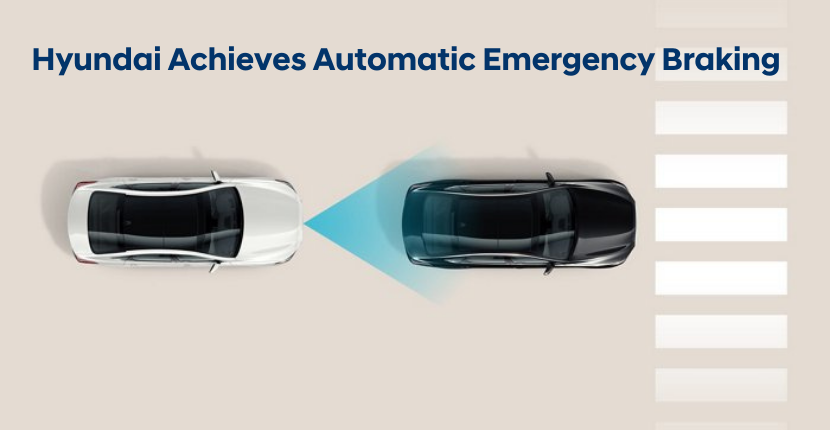
BSM systems use sensors to detect vehicles in the driver’s blind spots and provide warnings if the driver attempts to change lanes when another vehicle is present.
Blind Spot Monitoring (BSM) systems represent a significant advancement in automotive safety technology. They are designed to address a critical issue that drivers face daily: the blind spots that exist around their vehicles. Let’s delve deeper into how BSM systems work and the crucial safety benefits they offer:
**1. Sensor-Based Vigilance: BSM systems rely on a network of sensors, typically radar or ultrasonic sensors, strategically positioned around the vehicle. These sensors continuously monitor the area alongside and behind the vehicle, areas that are often invisible to the driver.
**2. Detecting Hidden Hazards: The primary function of BSM is to detect vehicles that may be lurking in the driver’s blind spots. These are the areas not covered by standard rearview and side mirrors. When a vehicle enters a blind spot, the sensors quickly pick up its presence.
**3. Visual and Auditory Alerts: BSM systems provide immediate feedback to the driver in the form of visual and auditory alerts. A warning light, often located on the side mirror or the interior door panel, illuminates or flashes when a vehicle is detected in the blind spot on the corresponding side of the vehicle. Simultaneously, an audible alert, such as a chime or beep, draws the driver’s attention to the potential hazard.
**4. Lane Change Assistance: BSM goes a step further by providing assistance when the driver intends to change lanes. If the driver activates the turn signal to indicate a lane change while a vehicle is detected in the blind spot, the BSM system may issue a more pronounced warning, such as a flashing warning light or a series of beeps. This added alert encourages the driver to reassess the lane change and avoid a potential collision.
**5. Reducing Lane Change Collisions: The primary goal of BSM is to prevent lane change collisions, which can occur when a driver merges into a lane occupied by another vehicle. By providing timely warnings and assisting in safe lane changes, BSM systems contribute significantly to reducing the risk of accidents.
**6. Enhancing Driver Awareness: BSM systems serve as an extra set of vigilant “eyes” for the driver. They help raise awareness of nearby vehicles and promote safer driving practices. This is especially valuable on busy highways, in heavy traffic, and during multi-lane maneuvers.
**7. Customizable Settings: Many BSM systems allow drivers to customize the sensitivity and alert settings according to their preferences. This flexibility ensures that drivers receive alerts that align with their driving style and comfort level.
**8. Complementing Other Safety Features: BSM is often integrated with other safety technologies, such as lane departure warning and adaptive cruise control. These complementary features create a comprehensive safety net that enhances the overall safety of the vehicle.
In conclusion, Blind Spot Monitoring (BSM) systems are a remarkable advancement in automotive safety. By using sensors to detect vehicles in the driver’s blind spots and providing immediate warnings, BSM systems significantly reduce the risk of lane change collisions and enhance overall driver awareness. These systems exemplify how technology can work hand in hand with human drivers to create safer and more secure roadways for all.
To expand your knowledge on this subject, make sure to read on at this location: Unveiling the Advanced Safety Suite of the Mazda CX-90: Your …
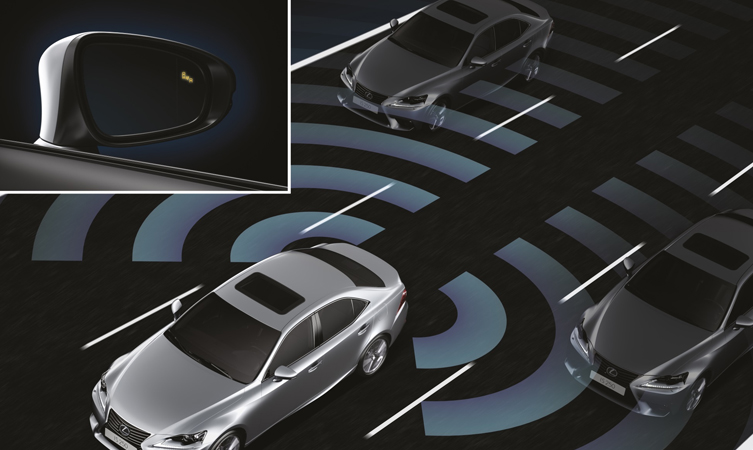
As technology continues to advance, ADAS features are becoming more sophisticated. The ultimate goal is to create fully autonomous vehicles capable of handling all aspects of driving without human intervention. However, this transition to autonomous driving is incremental and will take time. In the meantime, ADAS will continue to evolve, providing drivers with an ever-increasing level of safety and convenience.
Indeed, the journey toward fully autonomous vehicles is a gradual process, marked by continuous advancements in ADAS technology. These improvements, whether in adaptive cruise control, lane-keeping assist, or other systems, are steps toward a future where driving becomes safer and more convenient. As we embrace these innovations, it’s crucial to ensure a seamless transition to full autonomy, one that prioritizes safety, regulatory compliance, and public trust. The road ahead holds exciting possibilities for the future of transportation.
Looking for more insights? You’ll find them right here in our extended coverage: How to Build Advanced Driver Assistance Systems (ADAS) for …
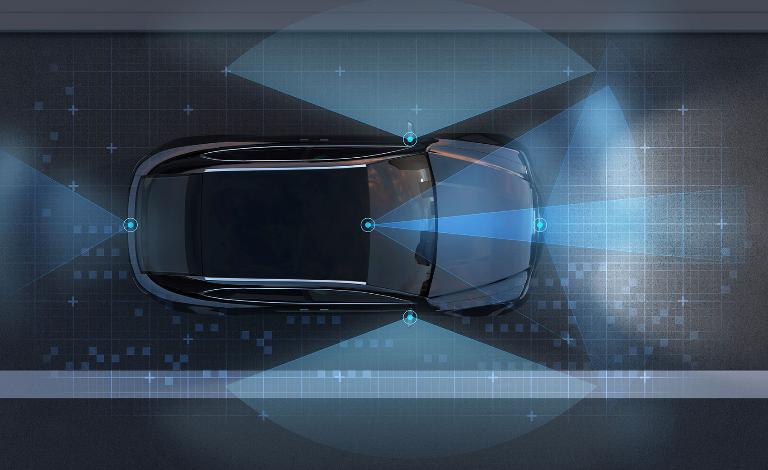
Conclusion
Advanced Driver Assistance Systems represent a significant leap forward in automotive technology. These systems have the potential to drastically reduce accidents, save lives, and make our roads safer. As ADAS technology continues to develop, we can expect more advanced features and increased integration into everyday vehicles, eventually bringing us closer to a future of autonomous driving.
Advanced Driver Assistance Systems (ADAS) are a remarkable leap forward in the world of automotive technology. These systems are not just about convenience or luxury; they have the potential to fundamentally transform road safety and save countless lives.
One of the key virtues of ADAS is their ability to act as a constant, vigilant co-pilot. Whether it’s alerting drivers to potential collisions, helping them maintain a safe distance from vehicles ahead, or assisting with parking and lane-keeping, ADAS technologies are always working to enhance driver awareness and decision-making.
One of the most compelling aspects of ADAS is their capacity to reduce accidents. By providing timely warnings and even intervening when necessary, these systems can mitigate or entirely prevent collisions. For example, Forward Collision Warning (FCW) systems can alert drivers to impending crashes and apply brakes automatically if needed. Similarly, Lane Keeping Assist (LKA) can gently steer a vehicle back into its lane if the driver inadvertently drifts.
Furthermore, ADAS technologies are paving the way for the future of autonomous driving. These systems serve as the building blocks for self-driving cars, as they already share many of the same technologies, such as sensors, cameras, and sophisticated algorithms. As ADAS continues to evolve and improve, we can expect to see more vehicles with increasingly advanced features, gradually easing the burden on drivers and making our roads safer.
The potential impact of ADAS on road safety cannot be overstated. According to the National Highway Traffic Safety Administration (NHTSA), the majority of car accidents are caused by human error. ADAS has the power to significantly reduce these errors by providing an extra layer of protection and awareness. As these systems become more commonplace and advanced, we can anticipate a substantial decrease in accidents, injuries, and fatalities on our roads.
Looking ahead, the future of ADAS is incredibly promising. As technology evolves, we can expect even more sophisticated features, improved integration, and a smoother transition towards autonomous driving. In essence, ADAS is not just a convenience; it’s a life-saving advancement that will continue to make our roads safer for everyone.
You can also read more about this here: Approach for improved development of advanced driver assistance …
More links
Looking for more insights? You’ll find them right here in our extended coverage: Steering Safety and Comfort: Global ADAS Market 2023 to 2032 …
